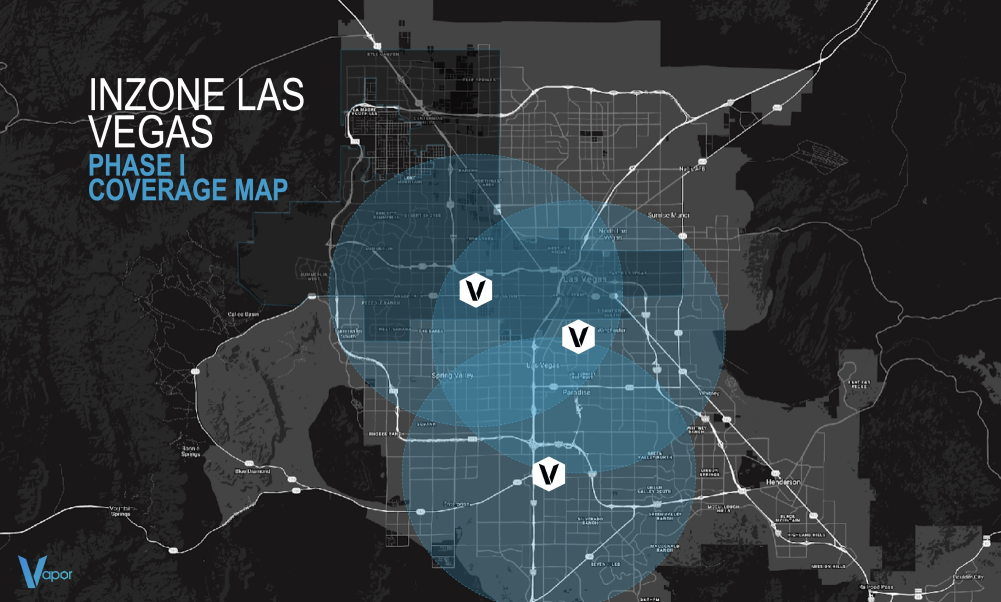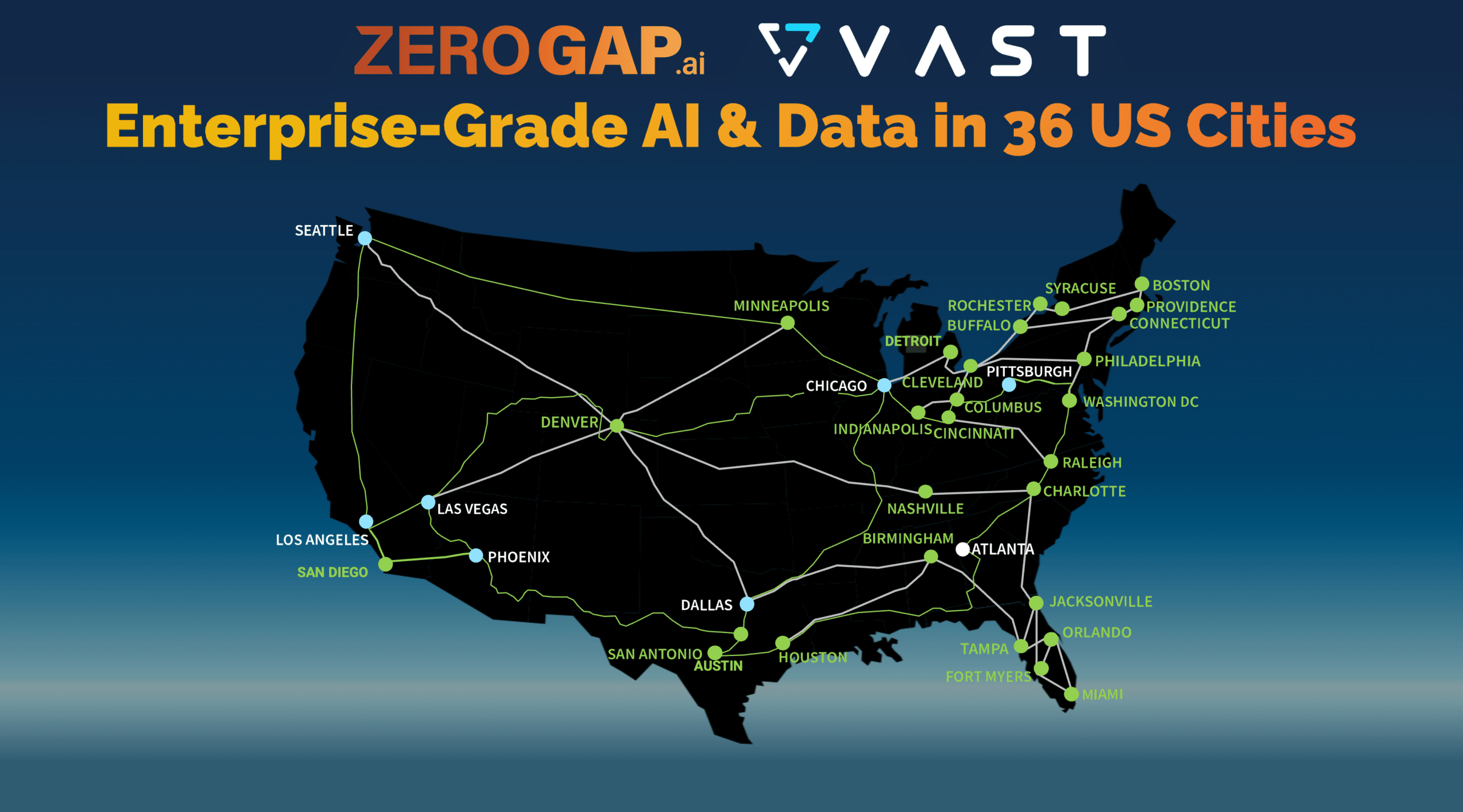On May 10, 1869, Leland Stanford—who later founded Stanford University—drove a 17.5 karat “golden spike” into the ground at Promontory Point, Utah. That ceremonial undertaking signaled the interconnection of the nation’s eastern and western railroad lines to form the transcontinental railroad.
Signed into law by Abraham Lincoln in 1862, the Pacific Railroad Act precipitated a common, shared rail infrastructure that would operate as a platform for commercial growth. It would spawn thousands of entrepreneurial businesses and exponentially increase the wealth and livelihood of millions of people. The transcontinental railroad became the apex of the first industrial revolution (Industry 1.0), setting the stage for the industrial revolutions to follow.
Today we are in the pilot stages of Industry 4.0 and have already observed demonstrable improvements in production efficiency as we marry the digital automation of Industry 3.0 with the Internet-assisted big data, AI, and IoT capabilities of Industry 4.0. Speed and flexibility of production goes up while costs and defect rates go down. Economic prosperity ensues.

The Geography of Prosperity
Just as the towns and settlements adjacent to railroad lines prospered as a byproduct of the nearby rail infrastructure and its ability to move goods and people, so will modern towns, cities and their surrounding regions grow and prosper from the digital infrastructure we install there and its ability to move data. Digital infrastructure creates jobs, improves wellbeing, and increases the economic prosperity of a region.
One of the most interesting aspects of Industry 4.0 is that the infrastructure required to accelerate its growth is hyper-local. From a digital infrastructure perspective, this begins to reverse the trends of the last 20 years, where the astounding progress and scale economies of cloud and the internet were derived from its centralization. The Internet we built, which for most of its modern life was designed to deliver modest amounts of data (often in the form of ecommerce sites and cat videos) to humans. But Industry 4.0 introduces a striking difference. It takes us from the world characterized by humans talking to machines to a world dominated by machines talking to machines. Humans operate in ones of seconds (or if you’re being generous, hundreds of milliseconds), but that is glacial to a machine. Machines operate in microseconds and nanoseconds.
That infrastructural changes are required to bring about Industry 4.0 is not a matter of debate; it’s a matter of inevitability. The Internet cannot escape the speed of light. Every kilometer adds 5-10 microseconds of latency, which means the farther light needs to travel, the more time it takes. Geography matters.
Building an Open Grid
For today’s Internet to support Industry 4.0, we must transform the Internet we have into the Internet we need. Most of what we consume on the internet today originates in a handful of massive data centers located, often, where land and power have been cheap. The applications housed in these data centers rely first on public and private backbones, and then the last mile networks, to carry their logic and data to the fringes, to the edge, where most of us exist and where they can deliver value.
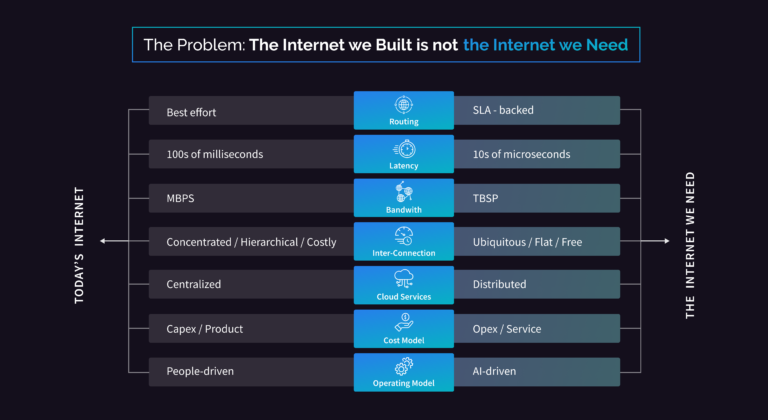
Today’s Internet cannot support Industry 4.0 because it was built during an era when the primary use case was humans consuming content. But that’s rapidly changing. As Internet-connected “things” — sensors, cameras, drones — proliferate, we need an Internet that does more than support humans talking to machines. We need to rebuild the Internet to support an era of machines talking to machines, at the edge. We need a next-generation internet, built from the edge in.
There is a movement underway to just that—rebuild the internet—led by the Open Grid Alliance (OGA). The Open Grid Alliance provides a framework for a global reimagining of the internet, what it calls an Open Grid, and its member companies collaborate to build it in the real world. (If you want to know more about the Open Grid, download and read the manifesto.)
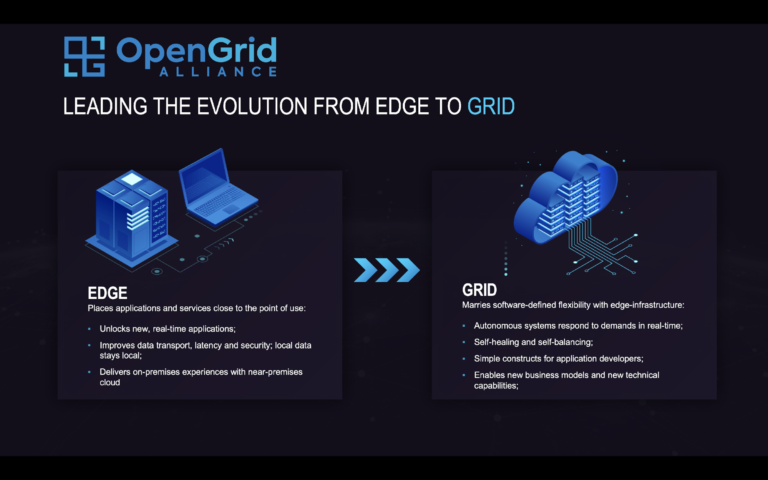
The Middle Mile Gap
Our legacy core-out Internet is dominated by the large hyperscalers, their private backbones and their massive, centralized data centers, often in the middle of nowhere. Robust networks connect centralized resources to large Internet Exchange Points (IXPs), typically in regional colocation data center facilities.
The major IXPs in Tier 1 cities are where you get “on and off” the backbone of the Internet. These locations are where the core of the modern Internet ends and traffic is handed off to legacy metropolitan networks. Data travels along metropolitan networks to eventually make its way to the last mile networks and the end users and devices. Between the last mile access network and the regional IXP is what practitioners refer to as the “middle mile.”
The legacy middle mile has started to reach the end of its useful life. Most middle-mile networks were built to handle the bulk of traffic going one direction: down. Modern IoT systems (e.g., cameras, sensors) want to send lots of data up. This traffic reversal creates immense backhaul pressure, which is costly to alleviate. Moreover, these networks also tend to be oversubscribed, which leads to congestion delays. Even if congestion were not an issue, legacy middle mile networks fail in many modern use cases because they also typically lack the ability to deliver discrete and predictable routing with SLA-backed networking that guarantees the required low latencies and low jitter.
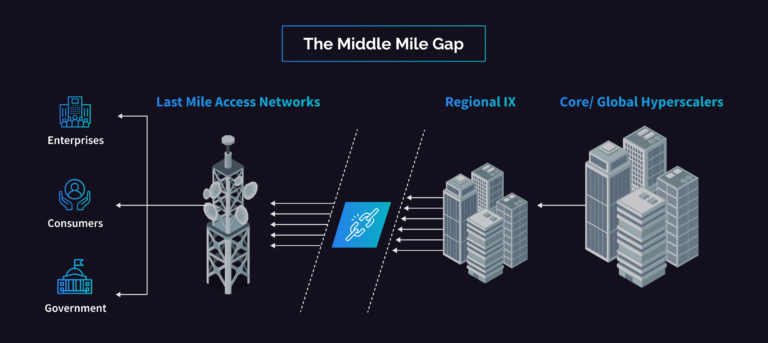
Industry 4.0 cannot operate over today’s middle mile. In yesterday’s world, an outdated middle mile might mean end users wait longer for Facebook to load and suffer through YouTube buffering. However, in the world of Industry 4.0, the middle mile network must be sufficiently robust and reliable to control a robotic lathe or autonomous drone with millisecond precision.
Bridging the Middle Mile Gap to Grow Industry 4.0
For Industry 4.0 implementations to grow exponentially, there must be a deployment model that offers both the right performance and the right economics. Unfortunately, the three historical deployment models all suffer from one or more significant flaws:
- On-Premises: Right performance, wrong economics
- Regional IX: Wrong performance, wrong Economics
- Centralized: Wrong performance, right Economics
Vapor IO has developed its Kinetic Grid platform, a technical architecture that brings backbone-grade performance to the middle mile, providing a purpose-built platform for Industry 4.0 applications. To further accelerate Industry 4.0 adoption, Vapor IO has also launched its INZONE program, which assembles key partners to collaborate on delivering services in a specific geography. INZONE partners integrate their solutions to offer end-to-end Industry 4.0 applications. The combination of the Kinetic Grid and the INZONE program ushers in new levels of performance and economics that will unlock Industry 4.0 at scale.

INZONE Las Vegas
The very first INZONE has been launched in Las Vegas, Nevada. The Phase I configuration for INZONE Las Vegas consist of three Kinetic Grid hubs located near key commercial zones within the city of Las Vegas and in surrounding Clark County.

The Phase I coverage map above shows the initial configuration of INZONE Las Vegas. The city of Las Vegas (upper left on the map) is shaded dark gray and the surrounding light gray areas represent Clark County. In particular:
- The Vs indicate the location of Vapor IO’s three hub sites. These represent major fiber intersections as well as the availability of micro modular data center facilities for housing network, compute and storage equipment for applications and services.
- The light blue circles surrounding each V represent an area with a 10 kilometer radius, within which Vapor IO’s Kinetic Grid can deliver sub 100 microsecond guaranteed latencies.
- The areas where the blue circles overlap represent locations that support sub 100 microsecond latencies from more than one hub location. This allows for higher levels of resilience by employing software high-availability failover techniques. If one server or facility fails, workloads can be migrated or restarted in an adjacent facility without exceeding the 100 microsecond latency tolerances.

What Does and INZONE Look Like?
Neutral host colocation data center facilities are deployed across the geography to host the Kinetic Grid. These facilities utilize Vapor IO’s proprietary micro modular data center designs. These data centers are built in a factory and shipped to the site and can range in size from tens to hundreds of Kilowatts.
The photo below shows one of our VEM-20 (20 Kilowatt) micro modular data centers being lowered onto a Kinetic Grid site in Las Vegas.
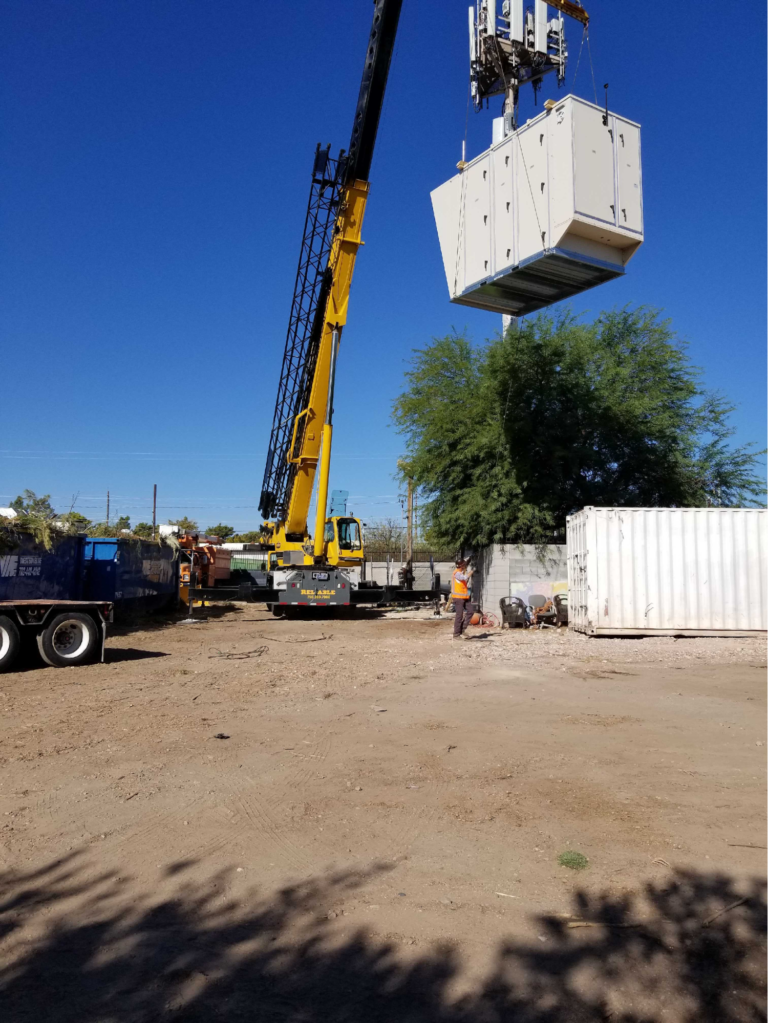
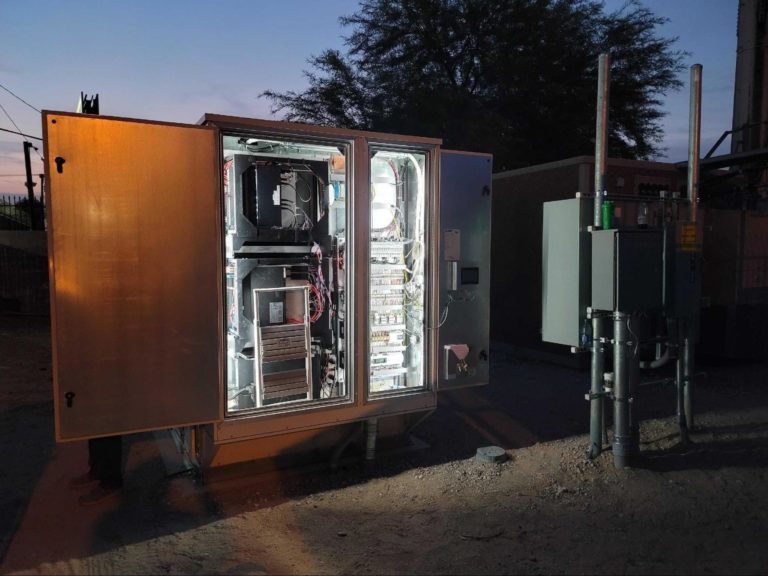
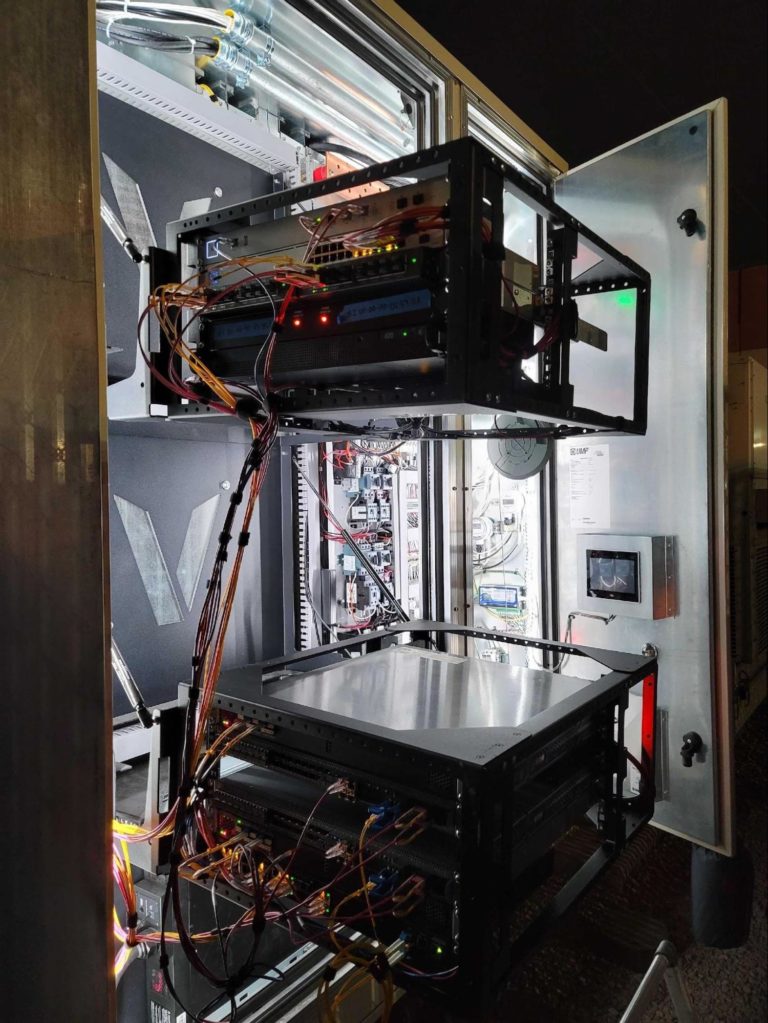
INZONE Las Vegas launched with three hub locations, but will expand to additional locations as demand warrants.
A Collaboration of Partners
INZONE is more than a collection of technologies; it’s an economic accelerator, delivered collaboratively by multiple vendors. By virtue of the neutral host, shared-infrastructure model of Vapor IO’s Kinetic Grid platform, customers and partners of Vapor IO can quickly deploy their technologies and services without having to build and operate their own critical infrastructure. This makes it easier and faster to bring Industry 4.0 products to market while also amortizing infrastructure costs across the multitude of its users.
The following companies are providing technologies and participating in the first INZONE in Las Vegas:
- Amazon Web Services (AWS) will provide AWS Outposts (a service that offers the same AWS infrastructure, AWS services, APIs, and tools to virtually any datacenter, co-location space, or on-premises facility for a truly consistent hybrid experience) as part of the INZONE testbed environment in Las Vegas, making it possible to run AWS workloads as if they were on-premises.
- Guavus (a Thales company) will provide its SQLstream real-time analytics technology to drive 5G telco, Industry 4.0 and other vertical industry use cases — enabling distributed data collection, AI-based analytics deployed at the network edge , and low-code/no-code dashboards for customer ease of use.
- Hivelocity will provide bare metal provisioning and private cloud services atop ITRenew servers, making it easy for enterprise customers to provision and manage servers on a pay-as-you-go basis.
- ITRenew will provide hyperscale-grade, bare metal rack solutions in INZONE environments, delivering breakthrough TCO and sustainability, while enabling enterprises in a near-prem environment to leverage the same best-in-class hardware used by the world’s largest cloud companies.
- Lenovo will provide edge servers designed specifically for edge environments and use cases. These edge servers offer VMware’s vSphere, vSAN and Tanzu Kubernetes platform in a small, secure and ruggedized form factor.
- Terbine will provide edge-based handling of IoT data moving between vehicles, devices and various end systems. Terbine’s IoT Data Exchange Platform will run on servers close to where data is acquired and consumed, supporting advanced applications in augmented reality, autonomous vehicle guidance, city-scale digital twins, localized traffic management, public safety and security.
- Terranet Communications will provide last mile wireless for digital divide initiatives such as remote learning as well as for a variety of smart city applications.
- VMware will provide its Telco Cloud Platform in support of 5G connectivity and its Multi-Cloud Services Grid for hypercomposition of edge-native applications spanning the user to core edge continuum.
Economic Impact
The first INZONE being deployed in Las Vegas, Nevada will be served from multiple sites, spanning both the city of Las Vegas as well as areas in surrounding Clark County, including the Las Vegas strip.
Tolaga Research conducted a study to estimate the potential economic value of INZONE for the City of Las Vegas and surrounding Clark County. The study examined Industry 4.0 use-cases focusing on key industry verticals, including smart cities and autonomous systems, gaming and entertainment, conventions and events, healthcare and retail services, casinos, manufacturing, warehousing, and logistics.
The study concludes that INZONE has the potential to unlock USD 28.9 billion in cumulative GDP contributions to Clark County over the five years between 2021 and 2025 and $115.8 billion over the ten years between 2021 and 2030. These estimates predict a 3.8 percent CAGR in Clark County’s GDP with INZONE and a 2.5 percent CAGR without INZONE.

Download the Las Vegas Economic Impact Report here.
What’s Next
As the world navigates the Fourth Industrial Revolution, we will see it disrupting virtually every industry with use-cases that require high-performance connectivity and edge computing infrastructure. To succeed with Industry 4.0, local governments and their policymakers must ensure that their regions have state-of-the-art digital infrastructure in place. Investments in digital infrastructure act as a force multiplier to a region’s economic development. They catalyze the economic growth of existing industries, while also making the region more attractive to new growth industries and capital investments.
INZONE is built upon Vapor IO’s Kinetic Grid platform, a high-performance connectivity and edge computing infrastructure solution, specifically designed address Industry 4.0 use-cases. INZONE partners, such as VMware, Amazon Web Services, Lenovo, Terranet and others, bring key component technologies that become part of the delivered solutions.
Vapor IO has plans to deploy the INZONE program across its entire footprint of 36 US cities and will continue to play an active role in helping to commercialize the architectural blueprints created by the Open Grid Alliance. The INZONE program will engage with local public and private stakeholders with complementary specialties to accelerate infrastructure deployments and to bring about social improvements, including such things as broadband wireless access for the under-served.
